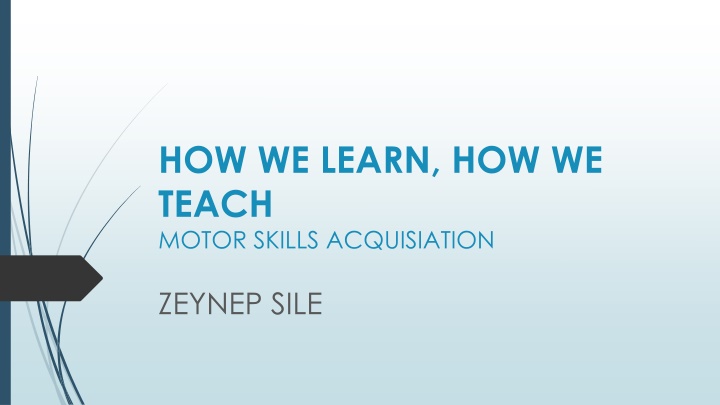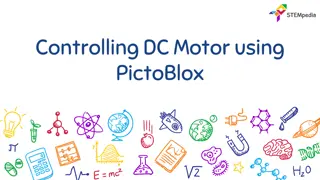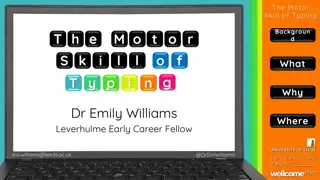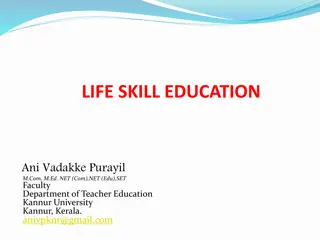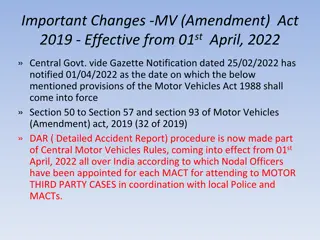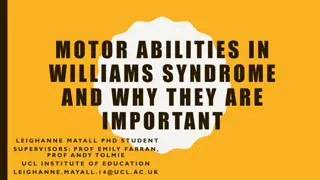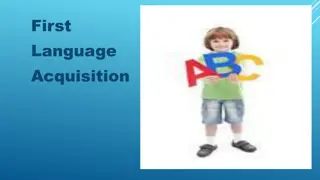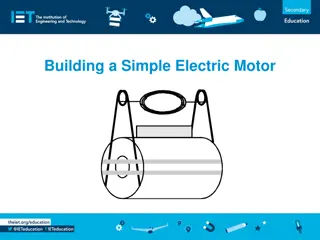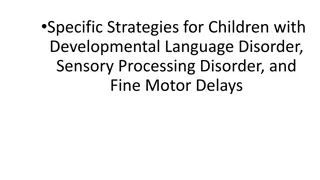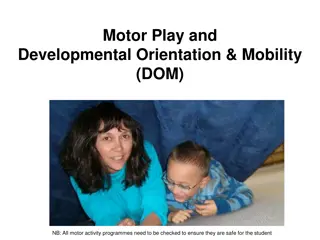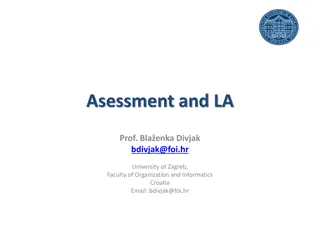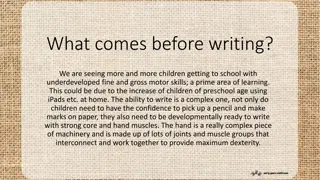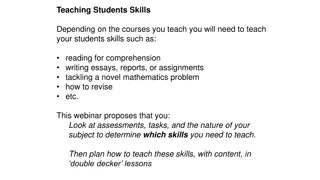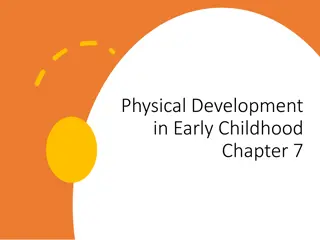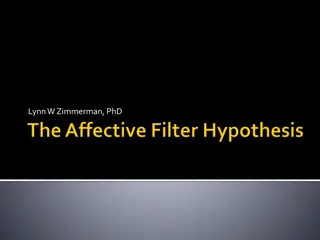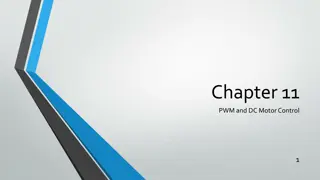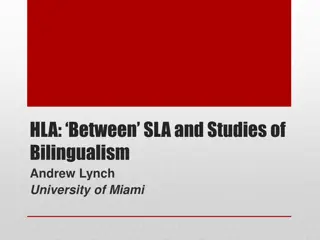Motor Skills Acquisition Process: Learning and Teaching Methods
Motor skills acquisition involves processes like perception, demonstration, replication, feedback, and repetition, helping individuals learn and master movements. Students, whether new or experienced, undergo unique learning processes based on their age and prior knowledge.
Download Presentation

Please find below an Image/Link to download the presentation.
The content on the website is provided AS IS for your information and personal use only. It may not be sold, licensed, or shared on other websites without obtaining consent from the author.If you encounter any issues during the download, it is possible that the publisher has removed the file from their server.
You are allowed to download the files provided on this website for personal or commercial use, subject to the condition that they are used lawfully. All files are the property of their respective owners.
The content on the website is provided AS IS for your information and personal use only. It may not be sold, licensed, or shared on other websites without obtaining consent from the author.
E N D
Presentation Transcript
HOW WE LEARN, HOW WE TEACH MOTOR SKILLS ACQUISIATION ZEYNEP SILE
According to Scmidt and Wrisberg, motor learning is defined as: The changes associated with practice or experience, in internal processes that determine a person s capability for producing a motor skill (2008).
The connection between the brain and the body involves our brain sending signals to our muscles through nerves, ensuring they contract and operate as needed, for as long as needed, and then transferring this to long-term memory. It is considered that a student has learned when they can consistently repeat the same skill.
Perception: Attention and observation of a demonstrated skill This first part necessities a motor plan which can be described as a plan for converting a series of instructions in our brain into action. Perception: Attention and observation of a demonstrated skill
A student new to ballet will go through different processes compared to an experienced student, and an adult student will differ from a young child.
Demonstration: The movement must be performed correctly as the student will use this first input as a reference to attempt to replicate the image. Mental Activity: The student evaluates the movement they have seen and received instructions for and plans an action.
Replication of what has been observed: : Trial Phase Replication of what has been observed Trial Phase Gathering Clues Creating a Mental Image Planning for Motor Skills Displaying the Skill
Feedback Feedback
Repetition Once appropriate neurological pattern set up, repetition will ingrain the skill into the body. Repetition Correction Phase Monitoring Performance Internally and Externally Evaluation and Replanning Retrial Perfection Phase Practicing with Ongoing Monitoring Reviewing Performance Correction Phase
Bloom's taxonomy Bloom's taxonomy
Creating meaning Creating meaning The clusters of meanings and stories that we create in our minds decide whether we will act, how much we will do, or what we can do. When a meaning formation aimed at a goal and a significant value contribution are established, internal motivation is also achieved.
Dopamine and Motor Skills Dopamine and Motor Skills The Effect of Dopamine on Attention and Focus How Dopamine Influences Perception Dopamine, Stress, and Excitement The Impact of Dopamine on Mood How Does Dopamine Affect Motivation? Dopamine and Creativity
